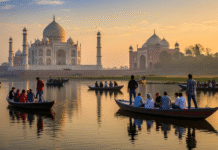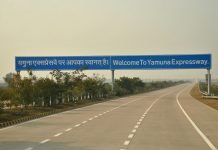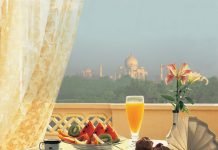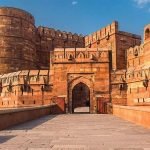Private Golden Triangle Tour by Train
Get customized consideration and appreciate an adaptable itinerary on this 5 days visit to Jaipur, Agra, and Delhi, known as the Golden Triangle Tour. The most well-known visits in North India, this 5 Days Golden Triangle Tour will be covering Delhi- The Capital of India, Jaipur – a beautiful capital city of Rajasthan and Agra – the city of Taj Mahal, one of the wonders of the world. All these locations will be covered via Double Decker Train.
You also like to Read 3 Days Golden Triangle Tour India with Train Ride Experience
“5 Days Golden Triangle Tour will be covering Delhi- The Capital of India, Jaipur – a beautiful capital city of Rajasthan and Agra – the city of Taj Mahal”
Day 1 – Arrival in Delhi
Friday Mosque (Jama Masjid) – One of the largest mosques in India It was built by the Mughal Emperor Shah Jahan between 1650 and 1656 at a cost of one million rupees.
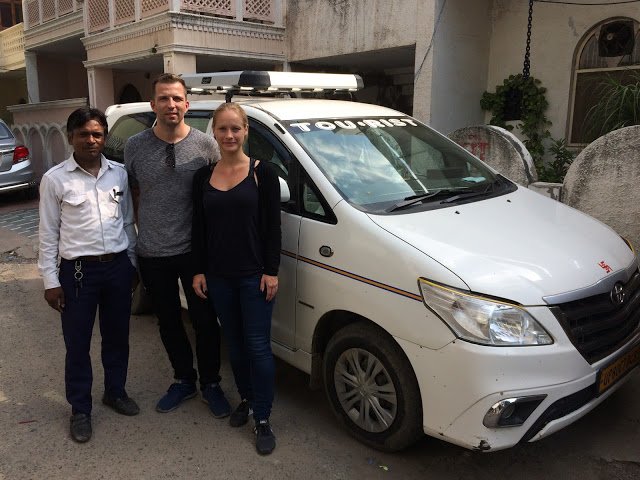
Delhi Agra one day tour by Car – Book with Local From ₹ 6,500
Delhi Agra one day tour by Car Inclusive of neat and clean Car with Experienced Driver + Local Live Guide on Additional cost – Check Out More!
View DetailsChandni Chowk Also known as Moonlight Square is one of the oldest and busiest markets in Old Delhi, India. It is located close to the Old Delhi Railway Station. The Red Fort monument is located at the eastern end of Chandni Chowk. It was built in the 17th century by Mughal Emperor of India Shah Jahan and designed by his daughter Jahanara.
Humayun Tomb is the tomb of the Mughal Emperor Humayun in Delhi, India. The tomb was commissioned by Humayun’s first wife and chief consort, Empress Bega Begum (also known as Haji Begum) and designed by Mirak Mirza Ghiyas and his son, Sayyid Muhammad, Persian architects chosen by her.
Swaminarayan Akshardham is a Hindu temple, and spiritual-cultural campus in New Delhi, India. The temple is close to the border with Noida. The complex displays millennia of traditional and modern Hindu culture, spirituality, and architecture. Inspired by Yogiji Maharaj and created by Pramukh Swami Maharaj, it was constructed by BAPS

Day 2 – Transfer to Agra by GATIMAN EXPRESS
TAJ MAHAL is an ivory-white marble tomb on the south bank of the Yamuna waterway in the Indian city of Agra. It was established in 1631 to 1653 by the Mughal Emperor, Shah Jahan with the help of 20 thousand workers to house the tomb of his preferred spouse, Mumtaz Mahal.
AGRA FORT is a historical fort in the city. It was the main residence of the emperors of the Mughal Dynasty until 1638, when the capital was shifted from Agra to Delhi, before capture by the British
Tomb of I’timād-ud-Daulah is a Mughal mausoleum in the city of Agra in the Indian state of Uttar Pradesh. Often described as a “jewel box”, sometimes called the “Bachcha Taj” or the “Baby Taj”, the tomb of I’timād-ud-Daulah is often regarded as a draft of the Taj Mahal.
Mehtab Bagh is also know as Moon garden or charbagh complex in Agra. It lies north of the Taj Mahal complex and the Agra Fort on the opposite side of the Yamuna River, in the flood plains. The garden complex, square in shape, measures about 300 by 300 metres (980 ft × 980 ft) and is perfectly aligned with the Taj Mahal on the opposite bank.
“Experience the opulence of a bygone era as you traverse through India’s Golden Triangle by train, exploring the cultural riches of Delhi, Agra, and Jaipur. Let the majestic landscapes and stunning architecture leave you spellbound on this unforgettable journey.”
Day – 3 Transfer to JAIPUR by A/C TRAIN
The City Palace, Jaipur was established at the same time as the city of Jaipur, by Maharaja Sawai Jai Singh II, who moved his court to Jaipur from Amber, in 1727. Jaipur is the present-day capital of the state of Rajasthan, and until 1949 the City Palace was the ceremonial and administrative seat of the Maharaja of Jaipur. The Palace was also the location of religious and cultural events, as well as a patron of arts, commerce, and industry.
JANTAR MANTAR is a collection of nineteen architectural astronomical instruments built by the Rajput king Sawai Jai Singh, the founder of Jaipur, Rajasthan. The monument was completed in 1734. It features the world’s largest stone sundial and is a UNESCO World Heritage site.
HAWA MAHAL the palace of breeze this structure will surely entice you with its unique beehive design, this was made with an intention to facilitate royal ladies and allow them to observe daily life in the street below without being seen.

Day – 4 JAIPUR SIGHTSEEING
Amber Fort or Amer Fort is a fort located in Amber, Rajasthan, India. Amber is a town with an area of 4 square kilometres (1.5 sq mi) located 11 kilometres (6.8 mi) from Jaipur, the capital of Rajasthan. The town of Amber and the Amber Fort was built by Raja Alan Singh Meena 967 AD, later ruled by kachawaha rajputs.
Jal Mahal is a palace in the middle of the Man Sagar Lake in Jaipur city, the capital of the state of Rajasthan, India. The palace was originally constructed in 1699. The building and the lake around it were later renovated and enlarged in the 18th century by Maharaja Jai Singh II of Amber.
Nahargarh Fort stands on the edge of the Aravalli Hills, overlooking the city of Jaipur in the Indian state of Rajasthan. Along with Amer Fort and Jaigarh Fort, Nahargarh once formed a strong defence ring for the city. The fort was originally named YOGESH, but it became known as Nahargarh, which means ‘abode of tigers’.
Galtaji is an ancient Hindu pilgrimage about 10 km away from Jaipur, in the Indian state of Rajasthan. The site consists of a series of temples built into a narrow crevice in the ring of hills that surrounds Jaipur.
“Embark on a captivating journey through India’s rich cultural heritage by train, as you explore the bustling cities of Delhi, Agra, and Jaipur.”
Day 5 – JAIPUR TO DELHI BY DEE DOUBLE DECKER TRAIN
QUTUB MINAR is a minaret and “victory tower” that forms part of the Qutb complex, a UNESCO World Heritage Site.

GURUDWARA BANGLA SAHIB is one of the most prominent Sikh gurdwara in Delhi, and known for its association with the eighth Sikh Guru, Guru Har Krishan, as well as the holy river inside its complex, known as the “Sarovar”. Gurudwara Bangla Sahib has one of the biggest kitchens in the world where almost 75 thousand people eat without any cost. Check out price



